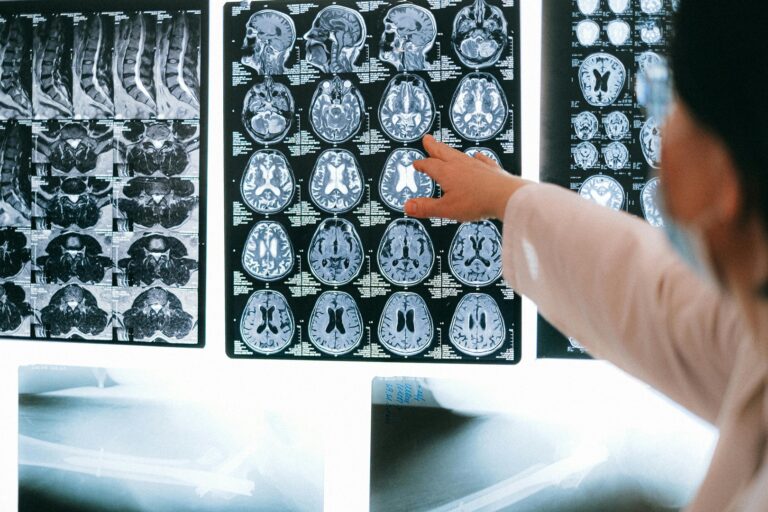Dr. Stephanie Chen is a neurosurgeonMedical doctor who diagnoses and treats surgical issues related to the brain, spine, and nervous system. Click the term to read more at the University of Washington. On April 13th she was our guest lecturer for our live webinar series on IIH and venous manometryA minimally invasive involving the introduction of instruments or other objects into the body diagnostic procedure performed by a neurosurgeon or interventional neuroradiologist where a catheter… Click the term to read more. We welcomed back Dr. Visish Srinivasan as a moderator who is a neurosurgeon at the Hospital of The University of Pennsylvania and was our previous guest lecturer on venous sinus stenosis.
Venous manometry is a minimally invasiveinvolving the introduction of instruments or other objects into the body Click the term to read more diagnostic procedure performed by a neurosurgeon or interventional neuroradiologist where a catheter is inserted through an artery and vein in the arm or leg and is brought up to the cerebrovascular system to measure pressure gradients across the venous system. The quantitative results can determine if there is an abnormality such as venous sinus stenosis. It is a great tool used in the workup of IIH as up to 90% of this population shows venous sinus stenosis on MRV.
Here are the highlights of Dr. Chen’s lecture:
- She reviewed the criteria of IIH, its physiology and treatment options. The ultimate goal for a patient with IIH is to optimize endovascular flow.
- She reviewed venous sinus anatomy and its normal variations. On angiography 43% of patients are seen to have right transverse sinus dominance and 10% of patients are found to have a bifid superior sagittal sinus.
- In patients with IIH, the venous anatomy differs in that they have a smaller caliber (size) of their dominant transverse sinus and superior sagittal sinus.
- The current surgical options for patients with IIH are: optic nerve sheath fenestrationA surgical procedure performed that allows cerebrospinal fluid to pass around the optic nerve freely Click the term to read more (ONSFoptic nerve sheath fenestration Click the term to read more), bariatric surgeryAn invasive procedure where the stomach is surgically manipulated to assist with weight loss. It is also known as weight-loss surgery. Click the term to read more, venous sinus stenting and shuntingA surgery during which a hollow tube (shunt) is placed in the sinus to help drain cerebrospinal fluid. Click the term to read more. Out of these options, venous sinus stentingA minimally invasive surgery during which a metallic mesh in the shape of a tube (stent) is placed in the sinus. Click the term to read more was found to improve visual field, visual acuity, headache, and papilledemaSwelling of the optic nerve that carries visual signals from the eye to the brain. Click the term to read more with a second to lowest complication rate of 2.3%.
- The degree of venous sinus stenosis found on imaging studies does not correlate with symptom severity, therefore venous manometry is a useful adjuvant tool.
- Venous sinus stenosis is most commonly found at the transverse sigmoid junction, as this area is most sensitive to compression. The second most common location of stenosis is the posterior sigmoid sinusTermed for its s-shaped anatomy, the sigmoid sinus is a long vessel that runs along the inside of the skull like a long winding road Click the term to read more.
- Venous manometry has been found to correlate with opening pressure on lumbar punctureA procedure where a needle is placed in the lower part of the spine (the lumbar spine) to access cerebrospinal fluid. Click the term to read more making it an alternative option for lumbar puncture in specific cases.
- The gradient threshold for stenting is between 8-10 mm Hg in most centers but some perform venous sinus stenting with a gradient as low as 4 and as high as 21 mm Hg. The gradient of 8-10 mm of Hg is extrapolated from the principles of skull base surgery where a venous sinus can be safely sacrificed with a gradient is less than ten.
Venous manometry is a great diagnostic tool useful in the diagnosis of IIH and for planning of surgical treatment options. If you would like to watch this webinar in its entirety, click here.
Our next lecture is on the glymphatic system of the brain and how it relates to IIH with Dr. Stephanie Lenck on May 17th at 9am EST. Dr. Lenck is an Interventional Neuroradiologist at Groupe hospitalier Pitié Salpêtrière and a researcher at the Paris Brain Institute (INSERM) in Paris. Her research at the Paris Brain Institute focuses on idiopathicThe term idiopathic is used when there is no detectable reason for something. Click the term to read more intracranial hypertension, cerebral venous and lymphatic physiology, and vascular malformations. Click here if you would like to register for this lecture and to receive reminders.



